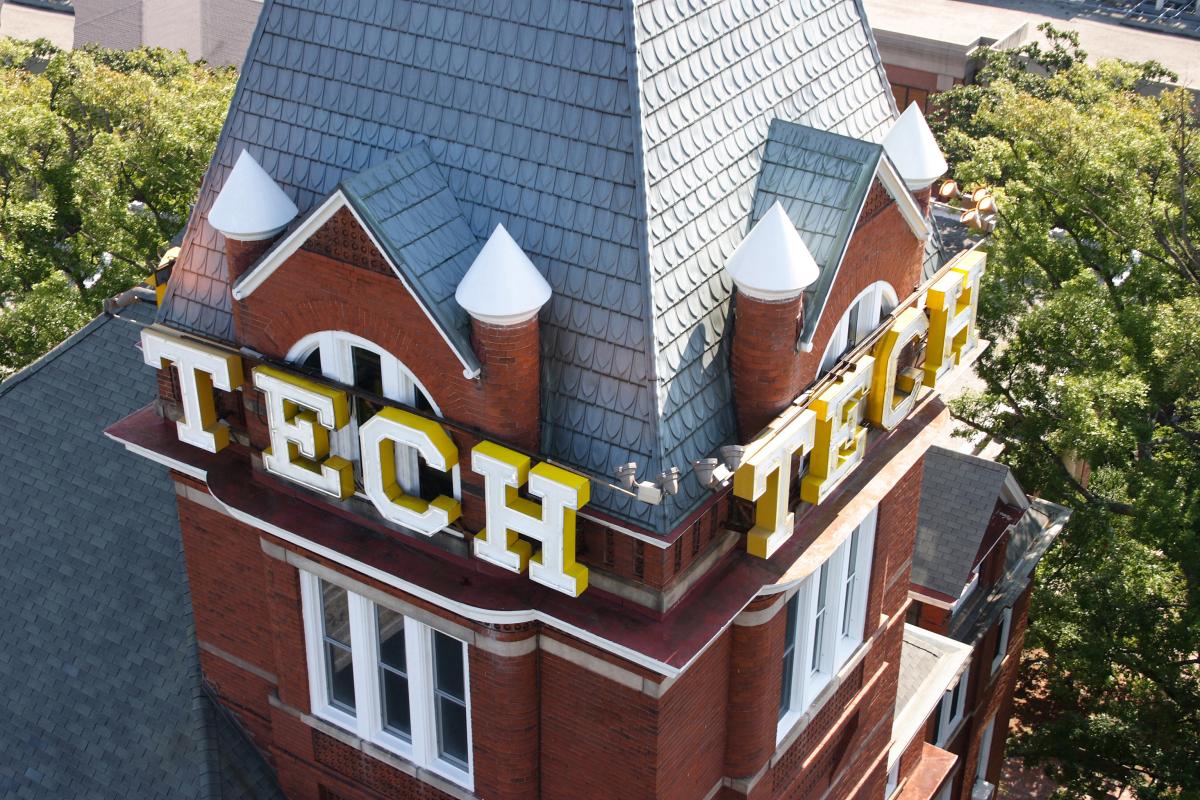
Reporting to Stephen E. Cross, Georgia Tech’s executive vice president for research, Jones will help strengthen collaborative partnerships between faculty members and all of Georgia Tech’s research sponsors. He will also play a key role in identifying and creating new research opportunities, planning for large proposals and fostering improved communication with faculty and staff.
“Chris has a wealth of experience working with many important federal and industry sponsors,” said Cross. “He also has a keen interest in providing support to researchers from every corner of Georgia Tech. I am looking forward to working with him.”
With degrees in chemical engineering from the University of Michigan and California Institute of Technology, Jones joined Georgia Tech in 2000 and is now the New-Vision Professor of Chemical and Biomolecular Engineering, a position created by an anonymous donor. Over the past 13 years, he has been principal investigator or co-principal investigator for research projects worth more than $30 million, and has published more than 140 papers.
“My group makes new materials that act as catalysts to promote specific chemical reactions, or that act as mass separating agents, allowing us to remove specific molecules from gas or liquid mixtures,” Jones explained. “We design new materials tuned for specific applications in carbon dioxide capture or catalysis. We try to solve practical societal problems by designing novel materials that can be incorporated into practical and scalable processes.”
The work of his research team has attracted a broad range of industrial sponsors, including Corning, Chevron, Dow Chemical, Exxon-Mobil, Phillips 66, DuPont, GE, Lonza – and even startup company Global Thermostat, which licensed Georgia Tech intellectual property for extracting carbon dioxide from dilute mixtures. Jones says the perception that industrial sponsors only care about near-term product applications isn’t true.
“All sponsors want you to push science and technology forward,” he said. “The industrial sponsors with whom I have worked want an intellectual partner who can work alongside their scientists and engineers to solve practical problems or uncover fundamental aspects about their materials, products or processes. It’s not correct to say that industry only wants to fund practical work because I’ve worked in several collaborations where fundamental scientific knowledge was valued as much as new products or processes.”
The keys to successful industrial collaborations, he said, are to understand the company’s needs and identify how Georgia Tech can contribute to the company’s long-term goals.
As part of his research program, Jones has directed more than 20 Ph.D. students and post-doctoral fellows. He finds that teaching and research complement one another.
“In many ways, teaching and research go hand-in-hand,” he said. “The ability to explain a complex subject to a student in class helps you give clearer descriptions of research results in your papers and lectures at conferences. At the same time, being engaged in the frontier of a research field allows you to better connect the basic concepts taught in class to practical implementations of the ideas in a contemporary context.”
Jones will be cutting back on his research and teaching to accommodate the associate vice president responsibilities. The position is budgeted for 50 percent time, but he’s well aware of the real time demands. Jones said he sees the new responsibilities as an opportunity to learn more about the broader research enterprise at Georgia Tech.
Jones fills a vacancy left by Ravi Bellamkonda, who left the associate vice president position to become chair of the Wallace H. Coulter Department of Biomedical Engineering at Georgia Tech and Emory University.
While his Georgia Tech responsibilities consume most of his time, Jones does pursue two major outside interests: hockey and auto racing.
Before the Atlanta Thrashers hockey team left Atlanta, he was a season ticket holder. He attended as many as 35 of their games each year, and still tries to see NHL games when he’s visiting other cities that have professional hockey teams. Jones can also be seen driving his cars, including an Audi TT-RS, at road courses around the Southeast, including Road Atlanta.
“This very effectively causes me not to think about my work at Georgia Tech for a while,” he explained. “I am a fairly intense guy, but everybody needs a little downtime.”
Research News
Georgia Institute of Technology
177 North Avenue
Atlanta, Georgia 30332-0181
Media Relations Contacts: John Toon (404-894-6986)(jtoon@gatech.edu) or Brett Israel (404-385-1933)(brett.israel@comm.gatech.edu).
Writer: John Toon
